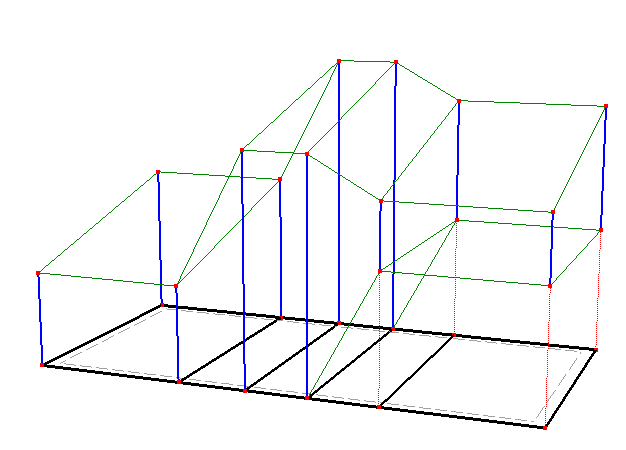The term Thickness Vector is used for a vector perpendicular to the base surface that extends the Base Surface to form a Solid (three-dimensional computational domain).
One or more Thickness Vectors define the height of a solid. Each thickness vector is defined by an Anchor Point P and two Boundary Points N1 and N2. The anchor point P must be part of the base surface, i.e., it must be either a defining point of the external boundary or the internal curve, or an internal point in the base surface. Boundary points N1 and N2 are arbitrary points in 3D space. Coordinates of these points can be edited, thus allowing one to specify the thickness vector in an arbitrary direction (i.e., not necessarily perpendicular to the base surface). Usually the anchor point P is the same as boundary point N1 so that one can use the same index for both P and N1. If, for whatever reason, we do not want to have the base surface on the bottom of the transport domain (Solid) (e.g., when the bottom of the transport domain is not in the same plane), users can make the N1 node be different from P (the red part in Figure below).

A solid with several thickness vectors.